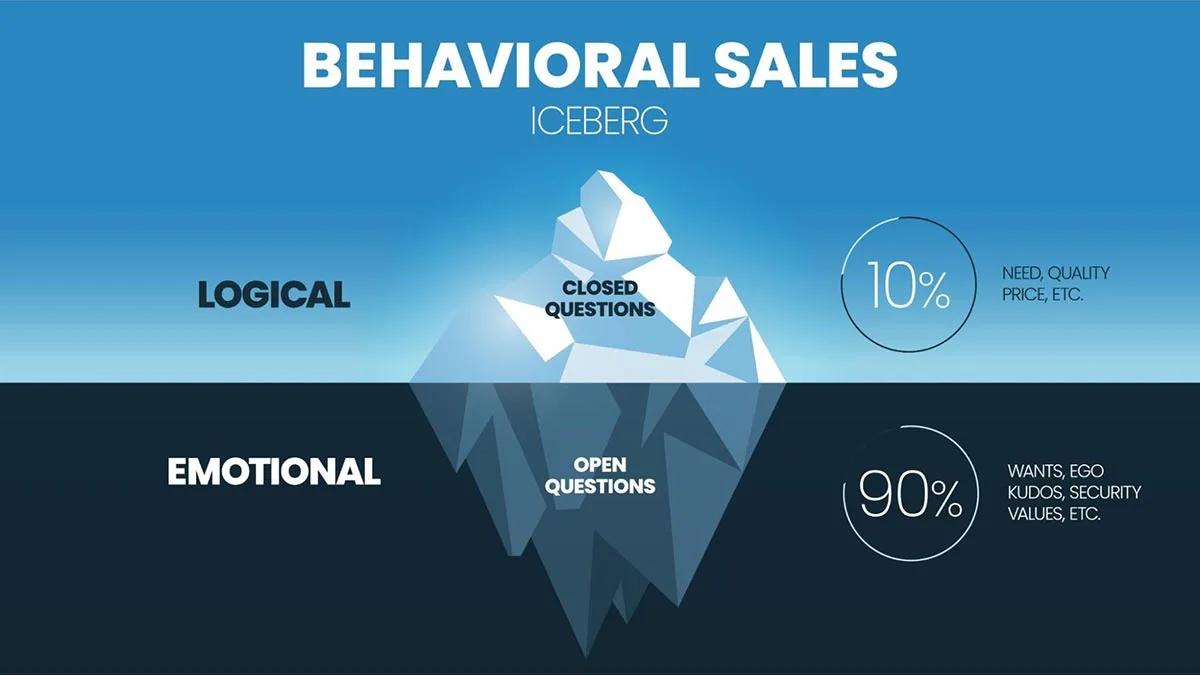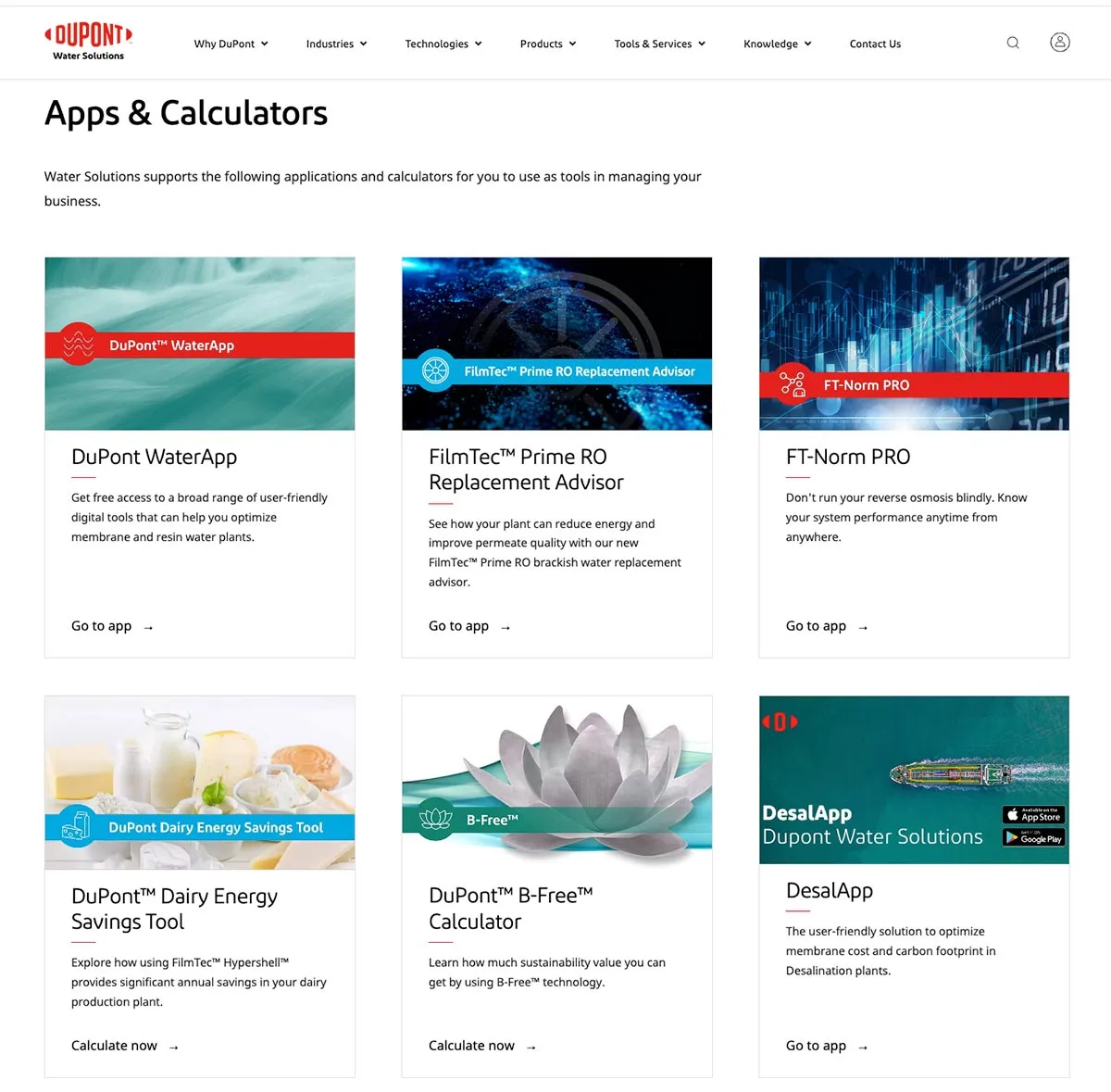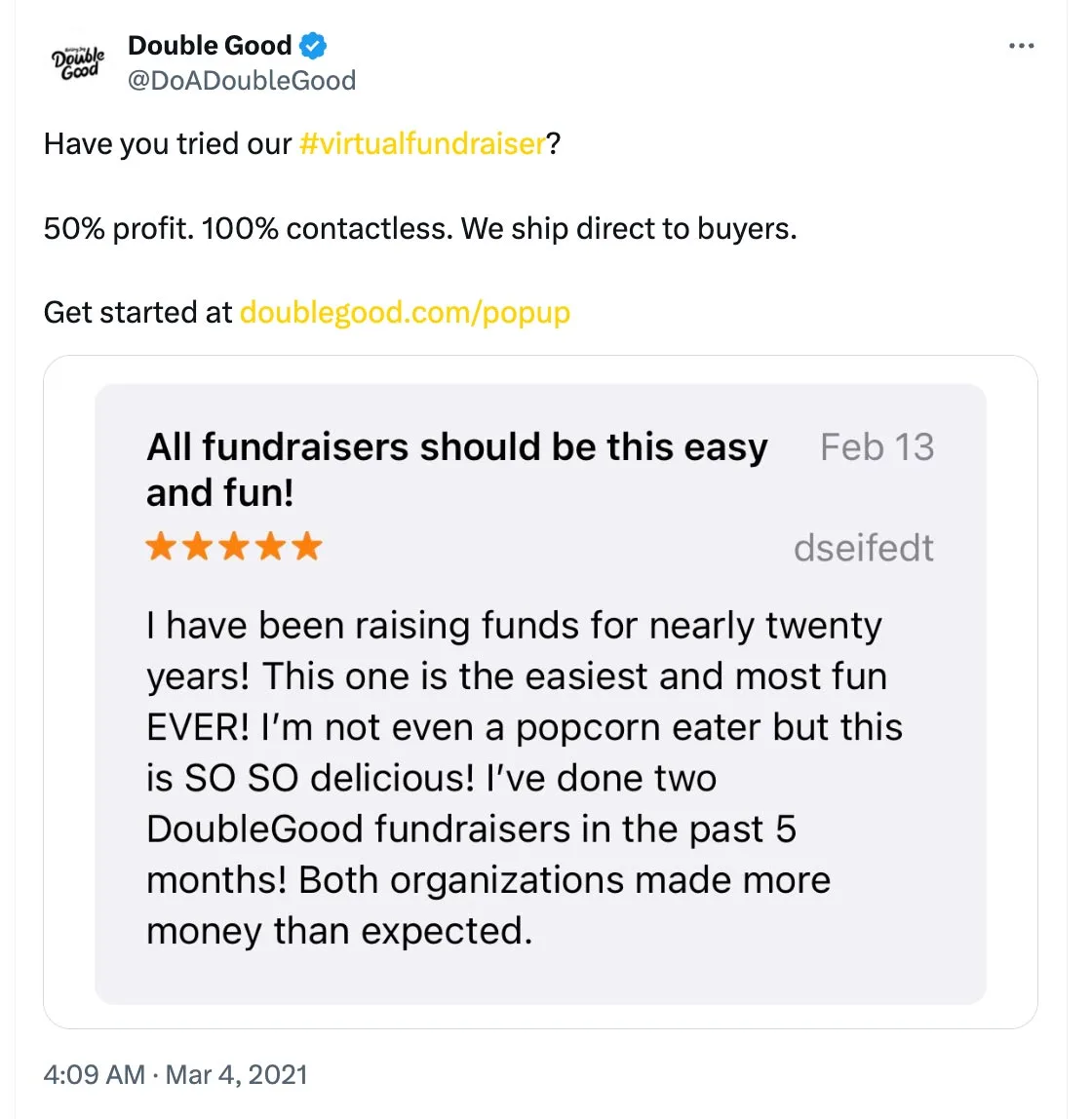How enterprises can increase B2B audience reach: 4 key steps

B2B (business-to-business) marketing often gets labeled as boring, predictable, and repetitive—but it doesn’t have to be. In the ever-evolving B2B landscape, embracing innovative strategies to drive meaningful engagement and increase B2B audience reach is paramount for enterprises.
Expanding your B2B audience reach is no longer a numbers game; it’s a strategic pursuit that demands a deep understanding of your target customers, a commitment to content excellence, and consistent deployment of data-driven tactics. The key to B2B marketing growth is to seamlessly blend these elements and elevate your B2B marketing above the boring and predictable.
How enterprises can increase B2B audience reach: 4 next-gen strategies
Increasing B2B audience reach requires a fundamental shift in mindset from generic promotion to the creation of meaningful, value-driven connections. Enterprises will thrive in the B2B landscape if they deeply understand their target decision-makers, craft content that resonates on a personal level, and deploy strategic tactics to build relationships. Below are four key techniques that enterprises can use to widen B2B audience reach and increase brand awareness.
1. Decipher the intricate web of B2B decision-making dynamics
Before implementing any strategy, it’s essential to understand the nuances of B2B buyers. B2B businesses have complex decision-making processes, multiple stakeholders, and longer sales cycles. Enterprises must expertly navigate this intricate ecosystem to identify and engage with the right individuals and organizations at the right time.
Understand the multiple stakeholders involved
In B2B, purchasing decisions often involve multiple stakeholders with different priorities and perspectives. It’s crucial for enterprises to recognize and navigate these decision-making dynamics to reach and influence their ideal customers effectively. These individuals may include C-suite executives, department heads, procurement managers, and other key decision-makers within an organization.
For example, a typical B2B purchase decision in a manufacturing organization could require input from various departments, each with its unique set of concerns and evaluation criteria.
The finance team may prioritize cost-effectiveness and ROI, while the operations team focuses on operational efficiency and scalability. The IT department, on the other hand, may emphasize compatibility, security, and ease of integration with existing systems.
By understanding these decision-making dynamics, enterprises can tailor their messaging and value propositions to address the specific needs of each stakeholder group. This approach not only increases the likelihood of successful conversions but also fosters long-term trust and collaboration with B2B clients.
Apply empathy-driven frameworks
Did you know that 73% of B2B buyers say that their sales interactions feel transactional and 59% feel that the sales reps don’t take time to understand their needs?
This is a far cry from what 84% of the buyers expect—for their sales reps to act as trusted advisors.
This reveals how much customers crave deeply personal messaging that appeals to their characteristics and preferences.
This is why enterprises must dig beyond surface-level demographics to understand buyer psychographics, emotional drivers, and the complicated interpersonal dynamics at play.
At the core of this approach is the “Iceberg Sales Model.” This powerful illustration depicts the visible portion of an iceberg, which is just 10% of its whole shape, as logical and explicit decision criteria. Meanwhile, the remaining 90% is underwater and out of sight, representing subconscious and emotional factors like:
- Personal worries about change or risk
- Self-serving interests or intra-departmental benefits
- Deep-rooted assumptions or biases
- Internal office politics
- Ingrained habits and preferences
- Emotional influences like trust or likeability
- Individual motivations like career goals
- Interpersonal dynamics between stakeholders

Enterprises can uncover these deeply rooted, hard-to-see buyer motivations through empathy mapping, using tools like Freeform or Smaply. By conducting in-depth behavioral research and analysis, you can visualize the attitudes, pain points, and underlying drivers of your target audience.
A combination of the Iceberg Sales Model’s framework and empathy mapping helps you develop a comprehensive understanding of your buyers. Armed with these insights, you can precisely model the complex approval cycles within target accounts—that appeals directly to the explicit needs as well as the implicit, subconscious factors influencing the purchase decision.
Develop detailed buyer personas
Once you have all these insights into your target buyers, you can use tools like Adobe Analytics and Salesforce’s Audience Studio to gather in-depth information into audience behavior and demographics. You can use this information to create highly targeted content clusters and develop buyer personas. Qualitative research methods, such as interviews, polls, and surveys, can help you gain a 360-degree view into the buyer’s journey, and the motivations, concerns, and decision-making processes of your target decision-makers.
Platforms like Hubspot’s Make My Persona and Xtensio’s Persona Creator offer user-friendly tools for persona development, ensuring that your content connects with your audience on a personal level.
2. Employ laser-focused B2B targeting and segmentation strategies
Instead of a generic marketing approach, precision targeting enables you to focus your efforts on the potential clients likely to convert. This surgical approach maximizes the return on your investment by directing resources toward the highest-impact opportunities.
Map your content strategy

With your audience segments and buyer personas defined, it’s time to map your content strategy to their specific pain points and challenges. Develop a content matrix that aligns your products or services with the corresponding pain points, ensuring that each piece of content addresses a genuine need or concern.
Leverage tools like Airtable or Trello to create a visual representation of your content matrix so you can easily identify gaps and opportunities for targeted content creation. This approach ensures that your content isn’t just promotional but also a valuable resource that positions your enterprise as a trusted partner and problem solver.
Make the most of intent data to identify ready-to-buy prospects
In the world of enterprise B2B, timing is everything. That’s why savvy marketers are turning to intent data. It allows them to identify prospects, pinpoint exactly when those prospects are researching solutions similar to what they offer, and engage them when they’re ready to buy.
First-party intent data, gathered from sources like your website, social media, and other points of interaction, provides a wealth of information into the online behaviors and purchasing signals of your target accounts. By analyzing this data, you can tailor your outreach to the specific companies and individuals expressing interest in your business at the right time.
For example, let’s say you’re a B2B software provider serving the finance industry. First-party intent data might reveal that a prospective company has been researching “financial reporting software” and “risk management solutions.” With this information, you can customize your outreach efforts—say create a highly personalized email or LinkedIn outreach—demonstrating how your offerings can enhance their financial processes and mitigate risks effectively.
One company that leverages intent data is Honeywell, a multinational conglomerate. By partnering with intent data providers, Honeywell’s marketing team leveraged intent data patterns to swiftly identify and package high-quality leads for channel partners, significantly reducing lead cycle times and boosting conversion rates. Their data-driven B2B growth marketing efforts delivered results higher than the industry standards, driving incremental business growth and optimizing lead generation processes.
For companies hoping for similar results, intent data should be integrated seamlessly into your existing marketing channels and sales workflows. This could involve setting up automated alerts, creating targeted account-based marketing campaigns, or aligning your sales team to respond to real-time buying signals.
You can also make use of Yelp to reach your B2B audience. When business owners create and manage their Yelp Business Pages, they self-report detailed information about themselves and their companies. As a result, Yelp has a treasure trove of first-party data on verified business owners and decision-makers across industries, including details like job titles, company size, and location. This data enables precise audience segmentation, targeting, and personalization.
You can create highly customized outreach based on Yelp’s business owner insights, then reach these engaged decision-makers across the web and connected TV channels using Yelp Audiences. This ability to laser-target the right prospects using the pre-built segments is a significant competitive advantage for B2B marketers.
Leverage buyer enablement to accelerate the sales cycle
Often, B2B decision-makers face a daunting array of choices and an overwhelming volume of information to navigate. That’s where buyer enablement comes into play—a strategic approach focused on empowering your target buyers with the knowledge and resources they need to make informed purchasing decisions faster.
At its core, buyer enablement involves creating highly tailored content experiences that perfectly align with the unique needs and pain points at each stage of the customer journey. These could include interactive ROI calculators, product demo videos, customer case studies, or even personalized consultation calls with your subject matter experts.
A prime example of buyer enablement in action comes from DuPont Water Solutions. They have an entire fleet of apps to help their target clients optimize their production, buy or replace new products, or monitor their sustainability. And all of this eventually ties in with their inbound marketing funnel:
- These apps and calculators act as lead magnets to bring in interested clients
- DuPont can use the first-party data from these apps to get more information on the users’ specific pain points, needs, and purchase considerations
- The marketing team can leverage these findings to deliver hyper-personalized content
- When prospects are ready to buy, DuPont is already top-of-mind and well-positioned as the ideal solution provider
The combination of buyer-centric apps and data-driven inbound marketing allows DuPont to guide their customers to exactly the kind of solutions and products they’re looking for—all the while acting like a helpful advisor rather than just making a marketing pitch.

Grainger, one of the biggest distributors of industrial supplies and equipment, goes a step further by helping their target audience with one of their biggest challenges—managing inventory. Grainger specialists actually visit the location to make sure that the inventory is managed and organized in the best and most efficient way possible without any loss of space or capital. And they help replenish stock with Grainger products.
Genuinely helping customers while subtly marketing their materials is a masterstroke—far from boring or predictable.
3. Craft targeted content that resonates deeply
Gone are the days of one-size-fits-all content. Enterprises must embrace the art of tailored storytelling, weaving narratives that resonate with the unique challenges, preferences, and industry-specific nuances of their target audiences—and that starts with personalization.
Master the art of B2B content personalization
Personalization is key to capturing and retaining audience attention. Your target customer can come across your product through search engines, social media, local directories, landing pages, or even through billboards. At every one of these points of interaction, enterprises need to tailor the relevant content to specific pain points, challenges, preferences, industry-specific requirements, and decision-maker personas at these interaction points. This creates a sense of relevance and fosters stronger connections with the customer base.
Double Good, a B2B company providing premium popcorn for virtual fundraising, implemented a personalized marketing strategy—that responds directly to its target customer’s pain points and questions—to achieve a 62% increase in conversions. Despite the limited space for ads, they created a personalized online ad that addressed the audience’s pain points and concerns directly by highlighting profits and ease of buying along with a piece of social proof.This helped Double Good exceed its growth targets and achieve a 39% decrease in cost per acquisition (CPA).

By positioning themselves as valuable problem solvers with a personalized approach, enterprises can establish their brands as reliable and trustworthy. Plus, extending this approach post-sales can help retain customers and get referrals.
For instance, 68% of B2B tech buyers said they won’t expand their contract if they don’t receive helpful content as a customer. So keep in mind that creating personalized content is for your existing customers as well as your potential customers.
Create engaging narratives that captivate and convert
Effective B2B content should go beyond product promotion to captivate and educate with in-depth, high-quality content, positioning your enterprise as a trusted partner. This is why it’s imperative to incorporate storytelling techniques—like case studies, customer success stories, and industry-specific insights—to demonstrate expertise and credibility.
Consider Davron Technologies, a top manufacturer of industrial ovens. They dedicate pages of their website to case studies, which drill down into how their industrial ovens solve specific problems, and they feature behind-the-scenes videos of how they build their ovens. The wide variety of options allows for a personalized experience to satisfy different buyer personas and position Davron as an authority.
For example, the case studies can help procurement managers choose the right product to meet the plant requirements, while plant managers can use them to know exactly how Davron’s ovens can improve their efficiency and performance. Similarly, operations directors can find their behind-the-scenes videos informative, and technicians may draw support from the oven maintenance articles.
On the other hand, American Express appealed to business audiences through lighthearted videos and images to complement their campaign slogan: “The card is for business. The points are for pleasure.” While most B2B ads are direct and professional, American Express made playful and engaging ads that highlighted key features.
The most effective B2B marketers leverage diverse multimedia formats to bring their narratives to life through long-form blog posts, webinars, or visually compelling infographics. Analyze your customer preferences and characteristics to identify the best content formats and create personalized narratives that capture attention and enhance engagement.
Leverage interactive content to boost engagement
While deciding on content formats for personalized narratives, it’s important to consider interactive content as part of the B2B growth marketing strategy.
Simply churning out static blog posts and whitepapers is no longer enough to capture your target market’s attention. To engage your audience, you need to embrace interactive content—striking, immersive experiences that encourage active participation in the learning process.
Based on your target customers, there are different types of interactive content you could incorporate:
- Quizzes
- Surveys
- Polls
- Interactive infographics
- Dynamic calculators
- Interactive maps
- Assessments
- Virtual tours
- Interactive timelines
- Interactive product configurators
- Interactive comparison tools
- Interactive chatbots or virtual assistants
The key is creating customer experiences that align directly with your buyers’ pain points and decision-making process, providing tangible value while generating lead data for your sales team.
For instance, Objective Management Group, a company specializing in sales team evaluations, employs an interactive tool called the Sales Force Grader. This tool assesses the effectiveness of sales teams and provides tailored suggestions for improvement. What sets this tool apart is its personalized approach—the team emails those who use it, guiding them towards relevant services based on their score.
Make sure your interactive content is useful and relevant to your prospective customers. By offering value and addressing potential pain points, you can capture the interest of your audience and guide prospects toward solutions that directly meet their needs.
4. Forge an unshakable B2B brand identity
Establishing a powerful brand presence is a delicate balance between cultivating thought leadership and maintaining a consistent brand experience across every touchpoint. Mastering these elements can help solidify your position as a trusted authority, foster long-lasting partnerships, and drive sustainable growth.
Cement your position as a thought leader

In times of economic downturns, 50% of C-suite executives believe high-quality thought leadership influences their purchase decisions. Decision-makers crave stability and look to authoritative voices to guide critical investments. Positioning your enterprise as a trusted industry expert can be the key to winning over wary buyers.
GE HealthCare, one of the top enterprises in the field of medical imaging and monitoring solutions, masterfully harnesses thought leadership with a robust content hub. Instead of relying solely on traditional whitepapers or blog posts, they’ve embraced a multifaceted approach, catering to various learning preferences and consumption habits.
They offer docuseries, podcasts, and expert insights, all of which provide valuable insights—from healthcare innovation and clinical best practices to emerging technologies and market trends—to a wide range of stakeholders, including medical professionals and hospital administrators.
To establish yourself as a thought leader like GE HealthCare, you can do the following:
- Diversify your content with visually engaging and interesting content in different formats
- Simplify complex concepts to cater to diverse audiences, fostering engagement and trust
- Ensure each piece is meticulously crafted and serves as a beacon, guiding decision-makers through your domain’s complexities
- Regularly update your content hub with fresh, innovative ideas to reinforce your position as a forward-thinking leader in your industry
Orchestrate a seamless B2B brand experience
Trust is the ultimate currency, many say, so maintaining a consistent brand presence across all touchpoints is non-negotiable. Comprehensive brand guidelines can ensure that every interaction—be it a website visit, social media post, or sales engagement—exudes a cohesive brand experience. This unwavering consistency across your B2B marketing strategies reinforces your organization’s expertise and professionalism, ultimately driving decision-makers to view your brand as a reliable and trustworthy partner.
Implement brand guidelines that ensure consistent messaging, visual identity, and tone across all channels. Leverage tools like Frontify or Brandpad to streamline brand asset management and ensure consistency across your organization.
Breathing life into B2B: an audience-first, data-fueled approach
For enterprises looking to increase their B2B audience reach and develop a sustainable growth model, the most important goal is to develop a strategic approach that blends audience insights, content excellence, and data-driven targeted tactics. This customer-centric mindset will propel your long-term success, positioning you as a leader in your field.
To explore more about how specific performance marketing ideas can help increase your reach and ROI, consider how data can accelerate your ads.